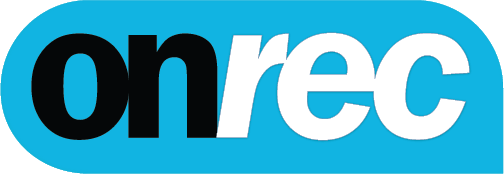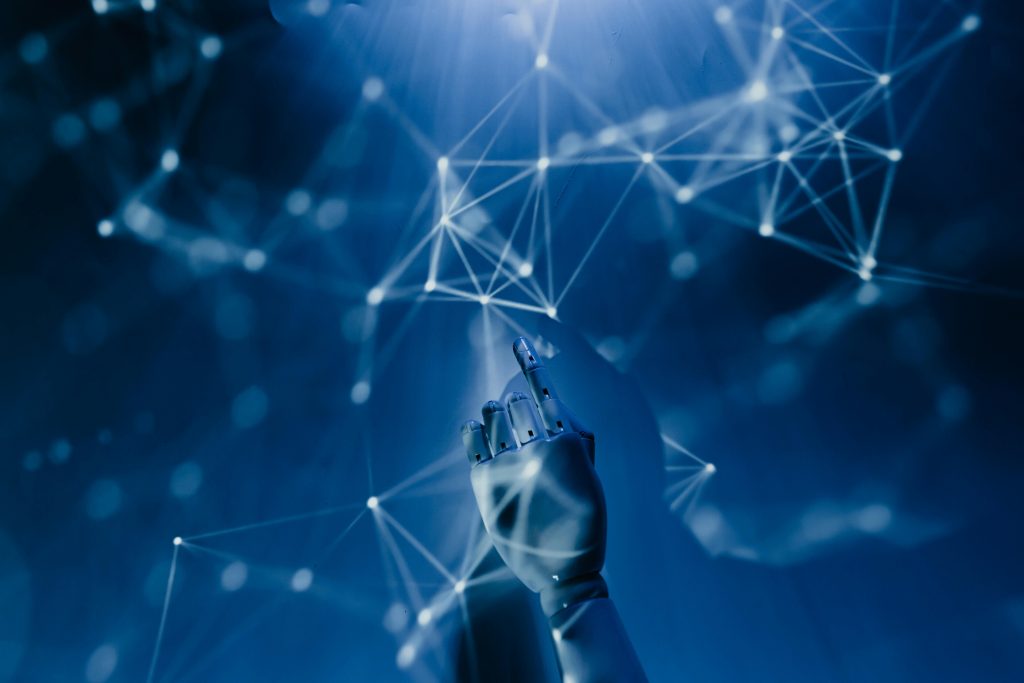HR leaders are no longer simply responsible for hiring, payroll, or training in the conventional way. Now they need to understand how to utilize AI tools, read data, and make informed decisions based on what the technology reveals! It’s not about replacing people, it is about doing a better job with AI support. As regular tasks are automated, HR leaders have more capacity to think about people, strategy, and creating a workplace that is stronger and more resilient. As AI becomes more widely integrated into regular HR processes, it is not going to replace human roles but expand them. AI is transforming HR by taking care of repetitive tasks, freeing human professionals to focus on strategic thinking, empathy, and employee experience which are the areas where humans continue to be better than AI.
Hence, this article explores in more detail the rise of AI in HR, how to build AI fluency, and the key new skills HR professionals need to succeed in an AI-driven environment.
1. The Rise of AI in HR: From Automation to Augmentation
AI's role in HR has evolved way beyond basic automation. What started as simply a means to automate tasks, such as sending offer letters, keeping track of time off, etc. is now augmentation. While automation simply helped alleviate errors and reduce manual work, it did nothing to address human aspects of HR such as empathy, conflict resolution, or strategic decision-making. This is where augmentation comes into play.
What HR Automation Really Means
HR automation is the use of technology to automate repetitive, rule-based tasks. Picture things like offer letters being sent, onboarding employees, and processing leave requests without even lifting a finger! This is automation at its core: taking time away from people doing manual effort, and reducing the opportunities for errors.
Automation first started with tasks such as benefits administration, time tracking and even some basic candidate screening. Products such as applicant tracking systems (ATS) and payroll management systems became common in most modern HR departments. These products not only made the work easier, but fundamentally changed the way HR worked.
However, it was quickly pointed out by critics that automation without augmentation is not going to embrace the human side of HR, such as emotional intelligence, conflict resolution or decision making for workforce planning purposes. This is where the difference between simple automation and extreme augmentation is shown.
How Augmentation is Different From Automation
Augmentation enriches human capacities while automation replaces repetitive tasks. Think of augmentation as giving HR teams a new great set of tools and data to make better decisions, not just systems that help them perform at a faster pace.
For example, AI driven analytics can predict which employees are likely to resign so HR teams can not lose good employees. Chat bots can answer simple HR questions and refer complex issues to humans. That is not replacement, that is humans and technology working together!
Augmentation does not remove the human element, it adds to it. It frees HR professionals to spend more time on all of the strategic initiatives such as leadership development, diversity and inclusion, and long term workforce planning. It elevates HR from a support function to a function that drives business results.
2.Why Traditional HR Skill Sets Are No Longer Enough
The expectations of HR professions are fundamentally changing because of AI. Central competencies like policy development, payroll management, and performance management will no longer be adequate in a world defined by machine-learning and evidence-based decisions. Contemporary HR professionals face expectations of engaging in artificial intelligence tools, understanding predictive analytics or algorithms, and contributing to strategic discussions about workforce technology. This type of thinking implies a reality where leaders must meld human insight with digital literacy. According to Gianluca Ferruggia, General Manager at DesignRush HR leaders will need to take it to the next level by not only accepting AI, but embracing it and instilling a culture of continuous learning in their professional teams, so that they can remain productive in a world where digital literacy and a capacity for working with data are becoming more important than the traditional HR skills.
A recent Multiverse and The Times report pointed out that the inability of HR teams to embrace this digital fluency could, in fact, totally negate use of the AI investment altogether. Likewise, companies should be treating HR as a center for AI knowledge transfer across the organization, and not just as a compliance function. In short, HR's role is moving from process manager to innovation enabler, and that requires a different level of technical and strategic agility.
3. Essential New Skills for the AI-Augmented HR Leader
-
Technical Understanding of AI Tools. One of the primary skills that HR professionals will have to develop is a technical understanding of AI tools. While you do not necessarily have to become an AI engineer, basic knowledge of both how AI works and how it is applied in HR will be critical. This would include knowing how to use AI tools, how to evaluate their output, and how to embed them into existing HR processes.
-
Data Literacy. We all know that in an HR world dominated by AI, data is king. HR professionals will need to become comfortable with data, knowing how to interpret, analyze, and use it to make decisions. HR professionals need to know basic statistical analysis, predictive modeling, and data representation.
-
Ethical and Legal Implications of AI. Having a good understanding of the ethical and legal implications of existing or proposed AI tools will be very important. As AI tools move into the HR space, it will be important to ensure the use of AI is fair, equitable, and free from bias, that privacy and confidentiality of data is maintained, and that any relevant legal obligations are followed, as emphasized in this guide for HR leaders.
-
Change Management. As AI enters into HR decision-making processes, there will be changes to processes and potentially job roles. HR professionals are going to need to consider how to manage the process of change, including how to communicate to stakeholders that AI is a part of that process, managing resistance to AI, and facilitating training and development to support employees with upskilling.
-
Human-Centered Design Thinking. Lastly, while AI is highly technical, the end goal of using AI in HR is to enhance the human experience. Therefore, HR professionals will have to incorporate human-centered design thinking into the implementation of AI, and i.e. be aware of the needs, motivations, and behavior of employees, and implement AI solutions to improve their experience and well-being. This way, emotional Intelligence and empathy, are of paramount importance. Although AI can perform many tasks, human instruction prevents AI from advancing and allows AI to provide the main support for people’s needs. HR leaders need to demonstrate empathy when interpreting AI-driven insights and making decisions relevant to the well-being of employees.
4.Building AI Fluency: What HR Professionals Should Understand About Algorithms
For HR professions, fluency in AI means knowing how algorithms make decisions, not just using the tools, but understanding, at a general level, what's going on behind the interface. That means knowing how data is being selected, how the models are learning, and where biases and our human tendency to over-rely on these systems of analysis may come into play. Fluency in AI is crucial when deciding on tools for recruitment, performance scoring, and models for predictive attrition. HR does not have to become technical professionals, but they need to know how to discern if an AI-enabled tool can moralize for the benefit of employees, and thus align with corporate values and equity within the workforce.
HR's job increasingly entails at least a thoughtful use of algorithm-based tools. That means knowing when to question the data, how to validate the outputs, and how to provide transparency for employees whose decisions or information impacted the use of AI (whether predictive, prescriptive or discriminatory). Leaders who understand algorithmic reasoning are better prepared to implement systems in a responsible, ethical and impactful way.
5. Collaboration Between HR and IT Teams: A New Strategic Alliance
It's no longer the case of IT managing systems and HR managing employee engagement. With technology at the core of each aspect of a business, HR and IT must collaborate and align their functions. If IT implements a new project management platform, its success will rely on IT's tool and HR's ability to enable the teams that are required to work on the project together. If HR creates a culture of engagement and positivity, but there are no measures in place to ensure it is supported with working technologies, and engagement may not last.
How HR and IT should Partner to Drive Results
-
Creating a technology savvy workforce. We have seen all possible scenarios. A business has ordered expensive software and is months into implementation when they realize that a significant portion of the workforce is having issues using it. This is where HR and IT should be aligned. IT is managing the technical implementation, but HR is responsible for encouraging employee engagement with the tools they are provided. In conjunction with the HR business partner and lines of business, a well-designed training and onboarding programme can result in employees using and feeling confident using the latest technologies and engaged with their work and workforce. This, in turn, produces more productive people.
-
Utilizing People Analytics for Better Decision Making. When making decisions in the workplace today, data-driven decisions are much more effective than instinct. HR has relied on data to drive various strategies during the years, for example, recruitment strategies, retention strategies, employee development. IT is the department which provides the instruments to capture and measure the information. By working together, HR and IT could maximize people analytics which will create more strategically driven, person-centred decisions in the interest of the whole organisation.
-
Protecting Employee Data. As businesses collect more and more employee data in the modern workplace, there is an increasing emphasis on the importance of protecting this information. By working collaboratively, HR and IT could establish more effective protections in relation to storage, access, recovery and usage policies that protect employee privacy. Even more so, the two teams can build an effective safety net where data protection is handled in an efficient manner that secures data whilst not inhibiting normal business operations.
-
Managing Change Effectively. Adjusting to change is part of life. How it is communicated is the factor that will make or break whether change transpires successfully. HR are experts in employee engagement and helping to design communications that consider questions and provide clarity by identifying the pros of changes to come. Conversely, IT holds the keys to the platforms that communicate these messages in the first instance, via an intranet or collaborative tools. They can work hand in hand to make the communication side of the change management process that little bit easier
-
Upskilling and Future Proofing the Workforce. In a world where the workplace continues to evolve due to technology, it is unclear as to whether their number one strength and unique advantage, engage their employees in a skill set that is fit for now and the future, HR and IT must work together. IT keeps ahead of technology, while HR is responsible for developing a clear pathway to market training and upskill programs.
6. How to Upskill: Practical Steps for HR Professionals to Get AI-Ready
1. Educate: Create the awareness and understanding of AI
HR professionals need a strong fundamental understanding of what AI is, what it can do, how it relates to HR, and an understanding of the risk this poses, notably data security, where it should not be used, and its limitations. This requires structured learning and becoming familiar with real-world scenarios for using it.
2. Equip: the right tools and safe practice space
After HR professionals understand the what and why of AI, they must possess the correct tools, guide and structured opportunities to play. Training must be structured, with the right tools and an approach of practice, this will gradually lead to confidence, and AI fluency. This phase is focused on meaningful practice in a low-risk supporting approach.
3. Expose: Integrating AI into daily work and encouraging collaboration
After the HR professional has become familiar with AI tools, the next step is to create opportunities to structurally integrate AI into talent daily workflows. This means developing new workflows progressively, implementing social learning and sharing ideas in an environment that promotes sharing what we learn.
Conclusion
As the AI revolution disrupts the HR landscape, the expectations of HR leaders are changing just as fast. More than ever, HR professionals cannot limit themselves to administrative functions and reactive duties; they need to be strategic, data-informed, and digitally adept. Adopting AI does not remove the human element, it leverages intelligent tools to enhance that connection. As we look to the future, HR will need to be adaptable, forward-looking, and competent. Greater skills in understanding algorithms, engaging constructively with IT, building actual AI fluency, and upskilling in a variety of teams will make a difference. It is time to proactively build these new capabilities and create a culture of innovation that allows HR to manage their relevance in a digital age and envisions them as the chief architect of the employee experience in an organization that strives to thrive in AI.






